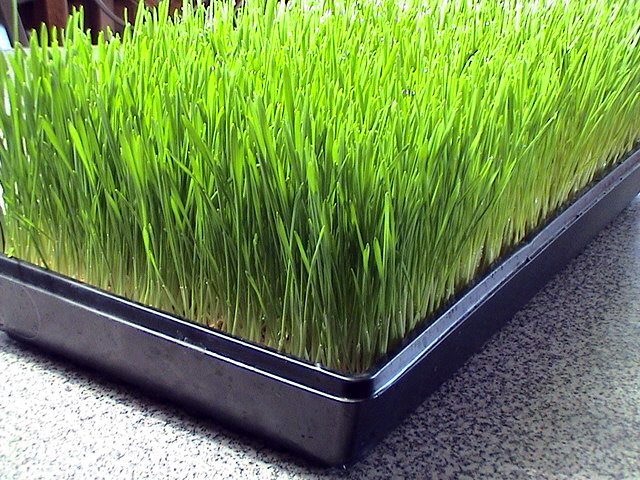Healthy Eating

When you attend the smoothie shop or get your preferred vegetable or fruit beverage at the store, you expect to consume a blend of fresh produce (fruits or vegetables), perhaps with add ons such as natural yogurt or juice. What you don’t expect to drink is grass.
Though as surprising it might sound, a lot of wellness refreshments and smoothies these days contain wheatgrass. Wheatgrass comes from germinating wheat seeds and is usually harvested just days after the grass begins to grow. Wheatgrass can be acquired as fresh vegetables and fruit at whole foods stores and then juiced to make a drinkable beverage. Wheatgrass will also be found in the form of tablets, powder, capsules, and frozen juice.
Quite a few feel that wheatgrass has unique healing qualities that could greatly improve health. Wheatgrass has been utilized in an attempt to reduce indication of fevers, colds, coughs, inflammations, and infections. Some people report that wheatgrass might help minimize constipation, mend skin disorders, rid the digestive system of unwanted organisms, relieve soreness, improve the immune system, expel toxins, and raise the body’s oxygen levels. Wheatgrass has been utilized to help handle cystitis, bronchitis, and gout. Some go so far as to believe that wheatgrass, when ingested often, may even cause cancer recession. Several small-scale science tests reveal that wheatgrass is indeed beneficial to our body, however very little considerable medical or clinical tests have tested the strength of wheatgrass in recovering physical diseases.
Even though science has yet to authenticate each of the claimed advantages of wheatgrass, wheatgrass has developed into current health food trend. Far more radical wheatgrass lovers sometimes take part in what has become referred to as the wheatgrass eating plan. The wheatgrass diet was initially started by European immigrant Ann Wigmore. Wigmore believed in mother nature being a healer and had been convinced that the Good Book sustains a notion in the healing qualities connected with grass. People that comply with Wigmore’s wheatgrass diet regime target ingesting “live foods,” such as uncooked fruits, uncooked vegetables, raw seed products, natural nut products, along with raw sprouts. Wheatgrass diet program enthusiasts prevent dairy, meats, and also cooked foods. So far, there is little clinical confirmation about the effectiveness on this diet plan.
Inspite of the uncertain scientific basis for wheatgrass remedies and dieting, research really does support the nutritional value connected with wheatgrass. Wheatgrass, very much like leafy green vegetables, contains large amounts of minerals and vitamins useful to the body.
Wheatgrass buyers has to be clever in their consumption of wheatgrass. Some wheatgrass health supplements are pure, but some others might have some other substances named contaminants. Bargain hunters should always browse the labeling and stay aware of what exactly is in just about every wheatgrass supplement. People ought to be aware that enjoying wheatgrass carries risking potential an allergic reaction. Person's allergic to other different kinds of grass should be in particular cautious. Since wheatgrass is consumed organic and grown in soil, germs along with mildew can take shape within the grass, which may also result in an allergic reaction. An allergic reaction may include puffiness with the throat, itchiness, hives, and also severe headaches. Any individual going through an allergic reaction really should be taken to the closest er. Although some folks have had an allergic reaction to wheatgrass, the chances of the consumer having a real effect are usually little.
Get a wheatgrass kit here:
| https://www.wheatgrasskits.com |
